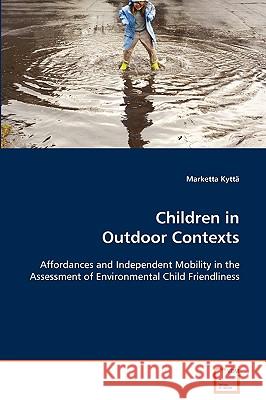Children in Outdoor Contexts » książka
Children in Outdoor Contexts
ISBN-13: 9783639088410 / Angielski / Miękka / 2008 / 208 str.
Environmental psychology concerning child-environment relationships has too often forgotten the environment itself. Place based child-environment research is needed to anchor children s experiences and behaviour to actual physical settings. This book introduces a new assessment model for a child-friendly environment, based on two central criteria: children's possibilities for independent mobility and their opportunities to actualize environmental affordances. Four hypothetical types of environment are distinguished: Bullerby, Wasteland, Cell, and Glasshouse. The Bullerby represents a child-friendly environment, as it allows a positive interactive cycle to develop between a child and the environment. The empirical results from almost 250 children indicate that the model is sensitive enough to assess the child friendliness of different communities in Finland and Belarus. In general, the proportion of Bullerby settings decreases and that of Glasshouse settings increases as the degree of urbanization rises. The Bullerby-model allows the integration of children's experiences with the material world, and it provides information that can be used in planning of child-friendly environments."











